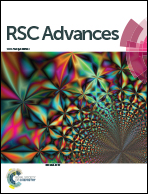Factors affecting the efficiency of a bioelectrochemical system: a review
Abstract
The great potential of bioelectrochemical systems (BESs) in pollution control combined with energy recovery has attracted increasing attention. Classified by their functions in the BES, microorganisms including degraders, electricigens, and element cycle-related microbes play key roles in pollutant degradation and electricity generation, and the functions of these microbes are affected by various environmental and operating conditions. This review systematically summarizes the effects of crucial conditions on the efficiency of the process of contaminant removal combined with electricity generation in BESs, with particular focus on the pH, temperature, conductivity, substrates, inoculums, magnetic field and reactor design parameters, such as architecture, electrode material, and electrode potential. The aim of this review is to help reveal the microbial functions during the bioelectrochemical remediation of environmental media and to optimize the system by determining the appropriate conditions for functional microorganisms, thus better promoting the transition of BESs from the laboratory to actual applications.



 Please wait while we load your content...
Please wait while we load your content...